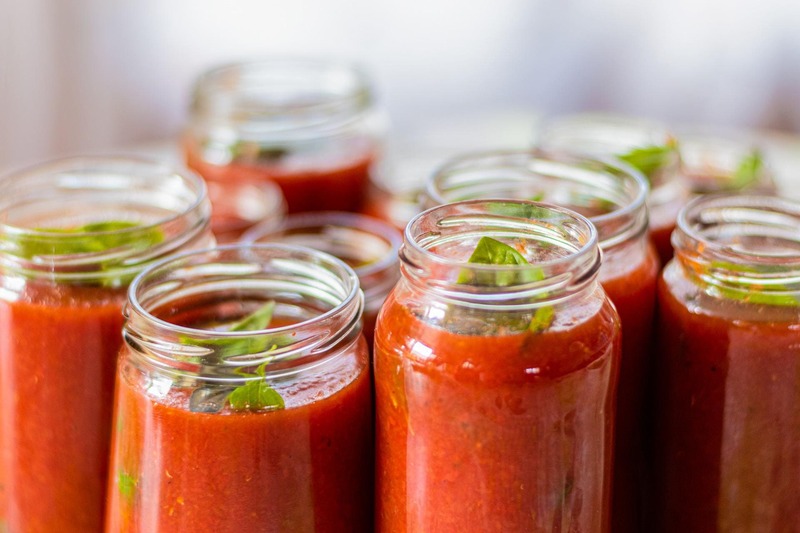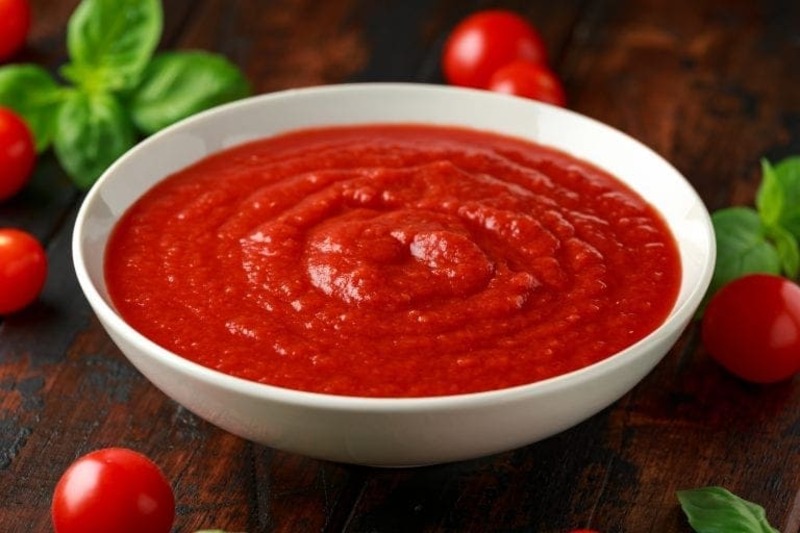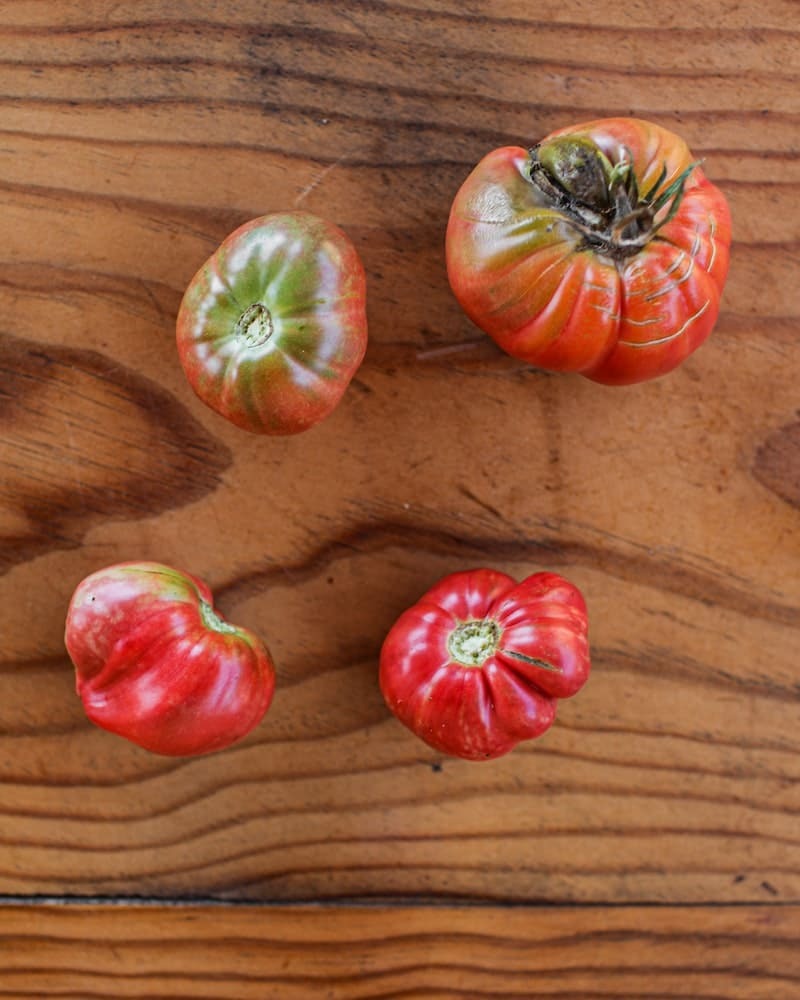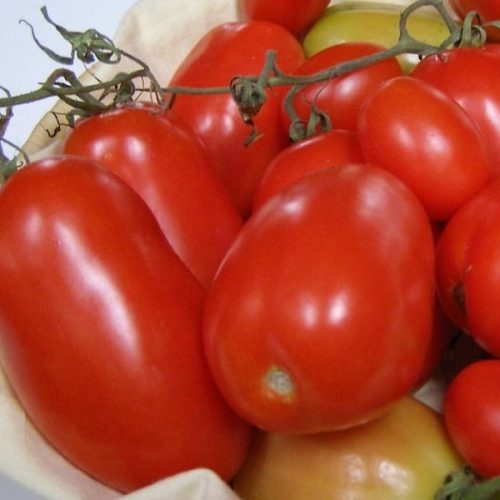Looking for a substitute for Plum Tomatoes? You’ve come to the right place! In this blog post, we will discuss a few substitutes that you can use in place of plum tomatoes. We will also provide tips on how to cook each of the substitutes. So whether you are looking for a healthier option or simply don’t have access to plum potatoes, we have you covered!
What is Plum Tomato?
Plum tomatoes, also known as Roma tomatoes, are a type of Italian tomato that is oblong in shape and has a deep red color. They are relatively low in acidity and have a sweet flavor. Plum tomatoes are often used in cooked dishes, such as sauces and stews because they hold their shape well when cooked. They are available year-round and can be found in most supermarkets.
8 Substitute For Plum Tomatoes
There are a few different substitutes for plum tomatoes that can be used in cooking.
- One option is to use Roma tomatoes. Roma tomatoes are a type of Italian tomato that is oval in shape and has a deep red color.
- Another option is to use cherry tomatoes. Cherry tomatoes are small, round, and typically red in color. They have a sweet flavor and a soft texture.
- Finally, another option is to use grape tomatoes. Grape tomatoes are small, oval-shaped, and typically red or yellow in color.
While there are some subtle differences between these types of tomatoes, they can generally be used interchangeably in recipes. Now, let’s discuss some more options that can be used as a substitute for plum tomatoes in detail.
1. Canned Tomatoes

While fresh plum tomatoes are always the best choice for cooked dishes, canned tomatoes can be a good substitute for plum tomatoes. Canned tomatoes are typically more affordable than fresh plum tomatoes, and they have a longer shelf life. In addition, canned tomatoes are usually already peeled and diced, which can save time in the kitchen.
When choosing canned tomatoes, look for brands that use whole, ripe tomatoes and avoid those with added salt or sugar. For the best flavor, opt for canned tomatoes that are packed in juice or water rather than in sauce.
2. Campari Tomatoes

Campari tomatoes are a popular type of tomato that is often used as a substitute for plum tomatoes. The main difference between the two types of tomatoes is their size and shape.
- Campari tomatoes are much smaller than plum tomatoes and have a more oblong shape.
- Campari tomatoes tend to be sweeter and less acidic than plum tomatoes. This makes them a good choice for cooking with recipes that call for sweet or neutral-tasting ingredients.
While Campari tomatoes can be used interchangeably with plum tomatoes in most recipes, they may not provide the same level of acidity or sweetness, so it is important to adjust the other ingredients accordingly.
3. Tomato Paste

Plum tomatoes are a type of tomato that is commonly used in cooked dishes because of its dense flesh and lack of seeds. However, they can also be quite expensive. As an alternative, you can use tomato paste. Tomato paste is made from cooked tomatoes that have been strained to remove the skin and seeds.
This concentrates the flavor and makes the paste very thick. When using tomato paste as a substitute for plum tomatoes, you will need to use less than the recipe calls for since the paste is more concentrated. Moreover, you also need to add a little water to thin it out.
Overall, using tomato paste is a great way to get the taste and texture of plum tomatoes without having to go through the trouble of finding them.
4. Regular Tomatoes

Regular tomatoes can be just as good of a substitute for plum tomatoes in many recipes when you don’t have access to plum tomato, and you need it urgently.
- The main difference between the two types of tomatoes is their shape. Plum tomatoes are oval-shaped, while regular tomatoes are more round.
- However, when it comes to taste and texture, there is little difference between the two. Both types of tomatoes have a juicy flesh with a slightly acidic taste.
- In terms of nutrition, both types of tomatoes are a good source of vitamins A and C as well as lycopene, an antioxidant that has been linked to several health benefits.
So if you’re looking for a tomato that will hold up well in cooking without sacrificing flavor or nutrition, reach for a regular tomato the next time you’re at the grocery store.
5. Sun-dried Tomatoes

Sun-dried tomatoes are a type of tomatoes that have been dried in the sun or in a dehydrator. The water has been removed from the fruit, leaving behind a concentrated, flavorful product. Sun-drying tomato is an ancient method of preservation that is still used today.
There are two main types of sun-dried tomatoes, oil-packed and dry-packed. Both types of sun-dried tomatoes are a great substitute for plum tomatoes and can be found in most supermarkets.
6. Heirloom Tomatoes

For many years, the plum tomato has been the go-to variety for making sauces and other dishes that require a lot of tomatoes. However, plum tomatoes can be difficult to find in stores, and they can be expensive when you do find them. Thankfully, there is a delicious and affordable alternative, heirloom tomatoes.
Heirloom tomatoes come in a wide variety of shapes and sizes, but they all share a deep, rich flavor that is perfect for sauces and other cooked dishes. In addition, heirloom tomatoes are usually more affordable than plum tomatoes, making them a great option for budget-minded cooks.
So next time you’re looking for a delicious way to add some extra flavor to your favorite recipes, reach for some heirloom tomatoes instead of plum tomatoes. You won’t be disappointed.
7. Beefsteak Tomatoes

The beefsteak tomato is a variety of tomatoes that is large and meaty, with a deep red color. Unlike other varieties of tomatoes like plum tomatoes, beefsteak tomatoes are not suitable for canning or processing, as they tend to be too soft. However, they are ideal for slicing and eating fresh, as their flavor is exceptionally sweet and juicy.
Beefsteak tomatoes are also an excellent source of lycopene, an antioxidant that has been linked to a number of health benefits. While they were once only available in specialty stores, beefsteak tomatoes are now widely available in supermarkets.
So if you’re looking for a delicious and healthy addition to your summer meals but don’t want to use plum tomatoes, give a try to beefsteak tomatoes.
8. Grape Tomatoes

Many people think that grape tomatoes are a type of plum tomato, but they are actually two different varieties of fruit.
- Plum tomatoes are larger and have a more oblong shape, while grape tomatoes are smaller and rounder.
- Both varieties are typically red, although there are also yellow and orange varieties of grape tomatoes.
- Plum tomatoes are usually used for cooking because they have a firmer texture and lower water content. Grape tomatoes, on the other hand, are often eaten raw or used in salads because of their sweetness and juiciness.
For this reason, many people prefer to use grape tomatoes as a substitute for plum tomatoes in recipes.

8 Substitute For Plum Tomatoes
Ingredients
8 Alternatives For Plum Tomatoes
- Canned Tomatoes
- Campari Tomatoes
- Tomato Paste
- Regular Tomatoes
- Sun-dried Tomatoes
- Heirloom Tomatoes
- Beefsteak Tomatoes
- Grape Tomatoes
Instructions
- Choose your preferred replacement from the list.
- Add substitute to your recipe.
- Make your own delicious recipe.
FAQs
Plum tomatoes, also known as paste tomatoes, are a type of tomato that is ideal for cooking and canning. Unlike other types of tomatoes, plum tomatoes have a lower water content, which gives them a thicker flesh that is perfect for making sauces and soups. And because they are less juicy than other types of tomatoes, they are less likely to cause splattering when cooked.
Now let’s discuss some most frequently asked questions about plum tomatoes and different options that you can use as a substitute for plum tomatoes.
What is the closest tomato to a plum tomato?
The closest tomato to a plum tomato would be the Roma tomato. The Roma is a popular Italian plum tomato that is used in many dishes. It has an oblong shape and is usually red or yellow in color. The skin of the Roma is thick, and it has very few seeds. This makes it ideal for canning and sauce-making..
Are Roma tomatoes and plum tomatoes the same?
Yes, Roma tomatoes and plum tomatoes are the same. They are both types of tomato that are classified as “pears”.
Can you use chopped tomatoes instead of plum tomatoes?
Yes, you can use chopped tomatoes instead of plum tomatoes. Plum tomatoes are a little bit sweeter and have thicker skin than other types of tomatoes, but they are not essential for making sauce.
Can I substitute cherry tomatoes for plum tomatoes?
Yes, you can substitute cherry tomatoes for plum tomatoes. Plum tomatoes are larger and have a more intense flavor than cherry tomatoes, but the two are similar in terms of sweetness and acidity. So if you’re looking for a slightly different flavor or are running low on plum tomatoes, cherry tomatoes will work just fine.
Final Words
So, if you’re in a pinch and don’t have any plum tomatoes on hand, the above substitute for plum tomatoes should do the trick. Just be sure to keep an eye on the consistency of your dish, as some of these replacements might not work as well as others. Got a favorite substitute for plum tomatoes? Let us know in the comments below!
Maybe you’d like to read:
- Substitute For Yellow Chartreuse
- 7 Scotch Bonnet Pepper Substitutes
- 5 Jerk Seasoning Substitutes
- 3 Substitutes For Cajun Seasoning

Welcome to my food site, RecipesAndPanty.com. I am a man who enjoys creating recipes and researching everything about food. This blog is dedicated to my grandmother because she gave me a taste for cooking.